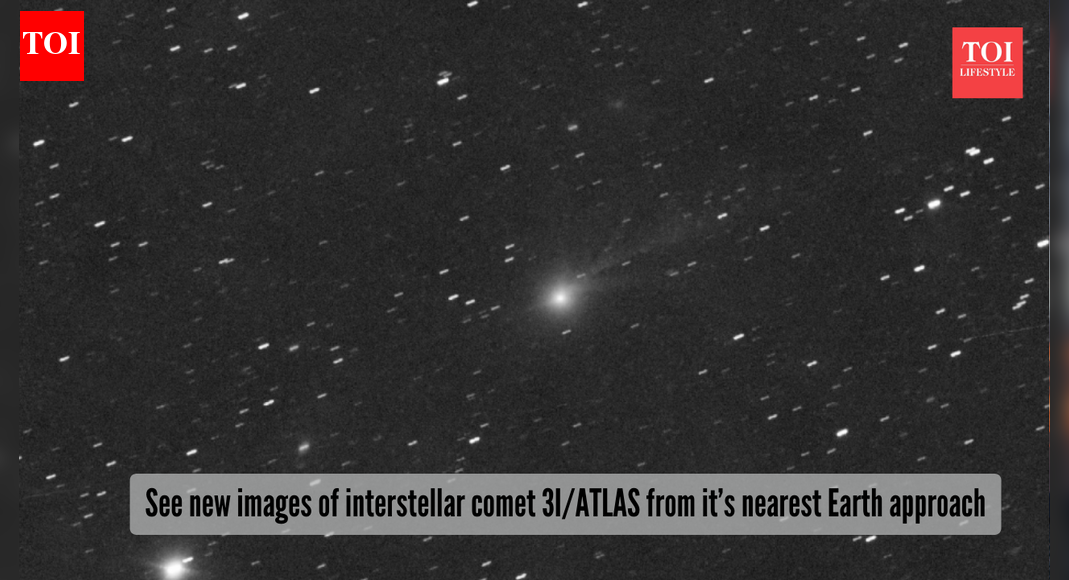- Smaller, Cheaper Cartridges Might Be Coming to the Switch 2 PCMag
- Nintendo will offer an alternative to Switch 2’s controversial Game Key Cards, dev claims Video Games Chronicle
- ININ Games Accidentally Reveals New Switch 2 Cart Sizes and Then…
Blog
-
Smaller, Cheaper Cartridges Might Be Coming to the Switch 2 – PCMag
-

Pakistan Arrests Senior IS-KP Commander Sultan Aziz Azzam
Pakistan has arrested senior Islamic State Khorasan Province (IS-KP) member Sultan Aziz Azzam, state media reported, citing intelligence sources.
According to Pakistan Television Digital, Azzam was recently apprehended…
Continue Reading
-
The Ellisons add TikTok's U.S. business to their entertainment empire – KOSU
- The Ellisons add TikTok’s U.S. business to their entertainment empire KOSU
- What does TikTok’s deal mean for America’s users? BBC
- TikTok signs agreement to create new U.S. joint venture, memo says CNBC
- China’s ByteDance signs deal to form joint venture in step to avoid US TikTok ban Reuters
- TikTok is Finally Being Sold to US to Avoid Ban ProPakistani
Continue Reading
-
Chevron continues operations in Venezuela despite war threat – KOSU
- Chevron continues operations in Venezuela despite war threat KOSU
- U.S. Tanker Seizure Has Paralyzed Venezuelan Oil Shipping—Except Chevron’s The Wall Street Journal
- Trump Revised Chevron’s Venezuela Deal. Maduro’s Oil Trader Profited. The New York Times
- Chevron keeps working in Venezuela amid tensions with U.S. (CVX:NYSE) Seeking Alpha
- How Chevron Secured Its Place as Venezuela’s Largest Foreign Investor The Wall Street Journal
Continue Reading
-

The Ellisons add TikTok’s U.S. business to their entertainment empire : NPR
TikTok has signed a deal to sell its U.S. operations to a group of investors led by Larry Ellison, the billionaire ally of Trump whose family media and entertainment empire just got bigger.
AYESHA RASCOE, HOST:
TikTok’s CEO says a deal has been signed to sell TikTok’s U.S. business to a group of mostly American investors. One of the lead billionaires behind the new entity is Larry Ellison, the chief executive of tech company Oracle. Ellison is a longtime ally of President Trump. NPR’s Bobby Allyn joins us to discuss what this new ownership means for the Ellison family’s growing business empire and the future of social media. Hi, Bobby.
BOBBY ALLYN, BYLINE: Hey, Ayesha.
RASCOE: So the American version of TikTok is about to get new owners. Tell us more about this deal.
ALLYN: Sure. I obtained an internal memo sent by TikTok’s CEO, Shou Chew, and he lays out exactly what’s going on here. And he says a new U.S. company will be established to monitor TikTok’s data flows and how the algorithm is working. So, you know, what’s being amplified and what’s not. And the group overseeing all of this will be a private equity firm called Silver Lake, the United Arab Emirates-backed fund MGX and Oracle, the software and data center company run by Larry Ellison. Now, TikTok’s parent company, ByteDance, in Beijing will still have a minority stake, and existing TikTok investors are also going to get some equity in this deal. But Larry Ellison, you know, is going to be a really pivotal figure in all of this.
RASCOE: So how did Ellison become a key player in the future of TikTok?
ALLYN: Yeah. You know, when lawmakers in Washington really started putting the heat on TikTok over its ties to China years ago, Ellison saw an opportunity. He really stepped up, and he offered to migrate all of Americans’ TikTok data over to Oracle servers. Oracle moved its headquarters to Austin, and TikTok started calling its plan to cordon off China from American TikTok users Project Texas as a nod to just how important Oracle would be. So that’s on the technical side. But on the political side, he’s, for years, been a huge supporter of President Trump. And in his second term, Ellison has become one of the most visible leaders in Trump’s orbit. And, you know, Ayesha, it’s worth mentioning here that this is a late career move for Ellison. He’s 81 years old, but TikTok is now in the stable of the Ellison family’s media and entertainment empire.
RASCOE: What do the Ellisons now have control over?
ALLYN: Yeah. Larry Ellison’s son, David, is the CEO and chairman of Paramount Skydance, which controls CBS News, Paramount Pictures, Paramount+ and more. And now the Ellisons are making a hostile bid to try to acquire Warner Brothers Discovery. And to get a hint of where they lean politically, I mean, look no further than to Paramount’s acquisition this year of The Free Press, which is a right-wing online website run by Bari Weiss that has positioned itself as the leading anti-woke voice on the internet.
RASCOE: Well, I mean, back to TikTok, could there be any changes in store for American users with the app now under the Ellison family’s control?
ALLYN: Yeah, and that’s the big question here. The internal memo that I got about the deal, you know, says that this new Ellison-led entity means that Ellison and these other investors are going to control content moderation on TikTok. So what’s allowed, what’s not, what you and I can post. And free-speech experts I talked to said that is no small thing. I mean, I started covering TikTok, Ayesha, like, six years ago, when its troubles began. And back then, everyone was super worried about this notion that China could censor what is allowed on the app. But now TikTok watchers are wondering if the Ellisons’ new content rules will make some other people feel like – that their voices are being censored. So that’s definitely something we’ll be watching going into the future.
RASCOE: That’s NPR’s Bobby Allyn. Thank you so much.
ALLYN: Thanks, Ayesha.
Copyright © 2025 NPR. All rights reserved. Visit our website terms of use and permissions pages at www.npr.org for further information.
Accuracy and availability of NPR transcripts may vary. Transcript text may be revised to correct errors or match updates to audio. Audio on npr.org may be edited after its original broadcast or publication. The authoritative record of NPR’s programming is the audio record.
Continue Reading
-

With cases on the rise, experts worry the U.S. is in for another bad flu season – NPR
- With cases on the rise, experts worry the U.S. is in for another bad flu season NPR
- Flu, RSV activity rising in US and Europe, with major UK surge in flu cases CIDRAP
- Virus Transmission Trends, Winter 2025–26 Johns Hopkins Bloomberg School of…
Continue Reading
-

Pop Culture Happy Hour celebrates 15 years : NPR
2010 ushered in a number of long-lasting changes to the pop culture landscape, including NPR’s Pop Culture Happy Hour Podcast.
AYESHA RASCOE, HOST:
Let’s take a step back in time to 2010….
Continue Reading
-

Chevron continues operations in Venezuela despite war threat – NPR
- Chevron continues operations in Venezuela despite war threat NPR
- U.S. Tanker Seizure Has Paralyzed Venezuelan Oil Shipping—Except Chevron’s The Wall Street Journal
- Trump Revised Chevron’s Venezuela Deal. Maduro’s Oil Trader Profited. The New York Times
- Chevron keeps working in Venezuela amid tensions with U.S. (CVX:NYSE) Seeking Alpha
- How Chevron Secured Its Place as Venezuela’s Largest Foreign Investor The Wall Street Journal
Continue Reading
-

WHO Issues Global Guidelines for Infertility Care
THE World Health Organization (WHO) has issued its latest global guidance on infertility, providing 40 recommendations and six good practice statements to improve prevention, diagnosis, and treatment of infertility. This guidance reflects…
Continue Reading
